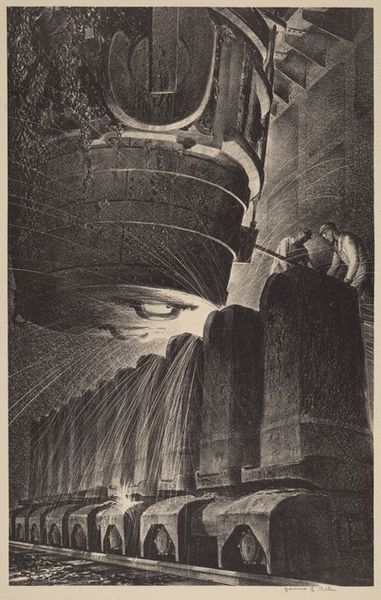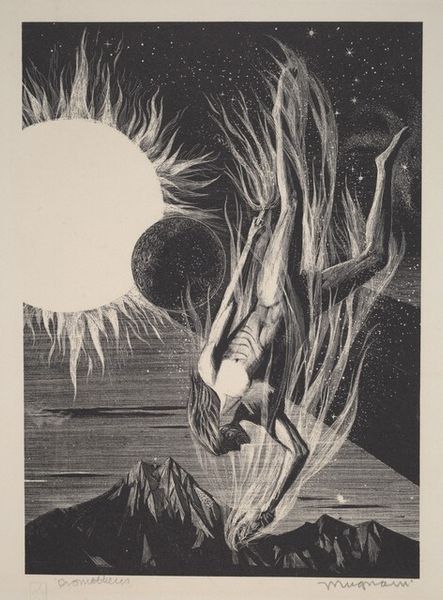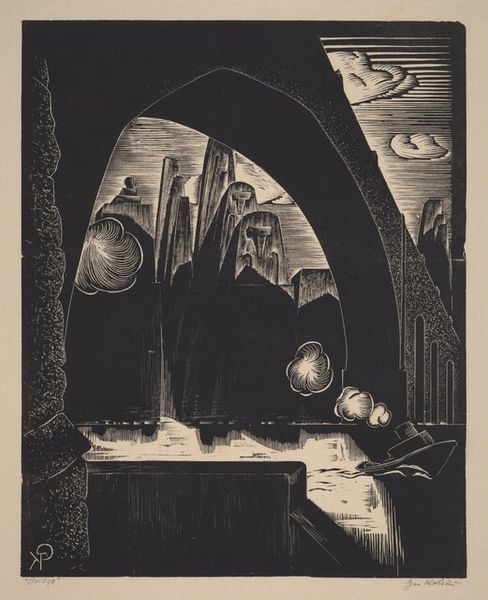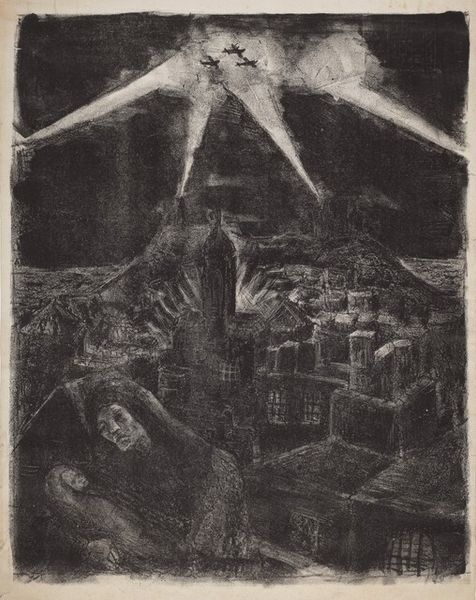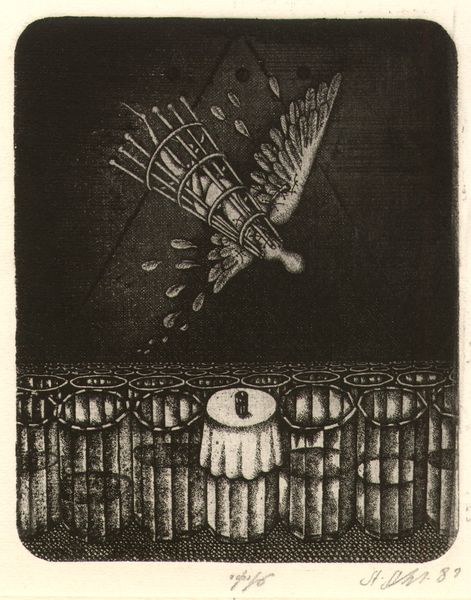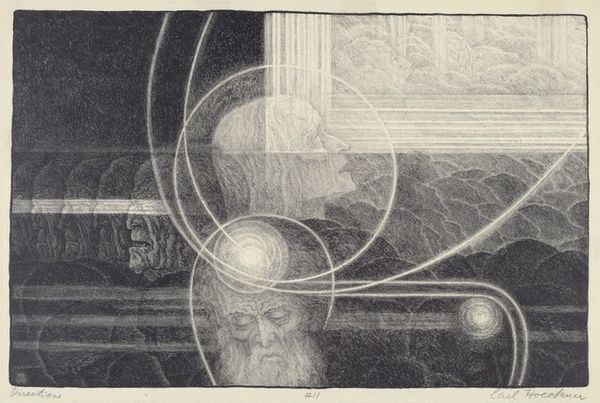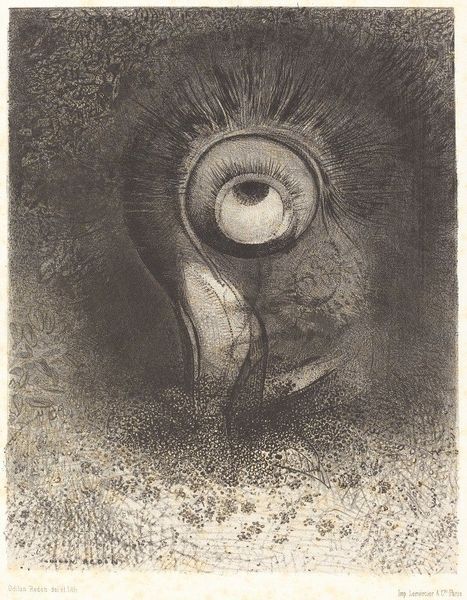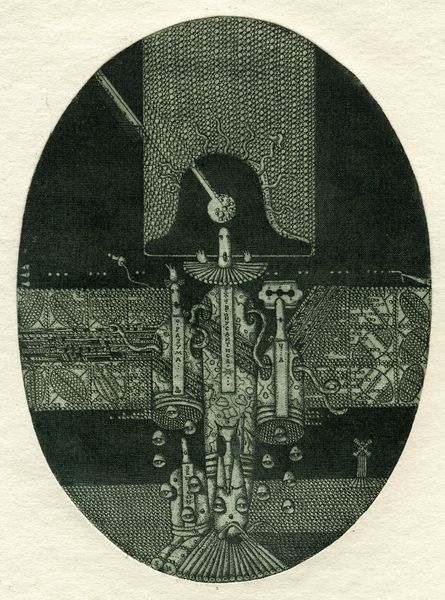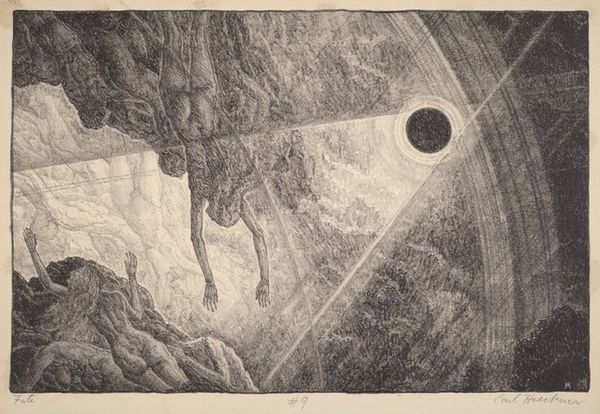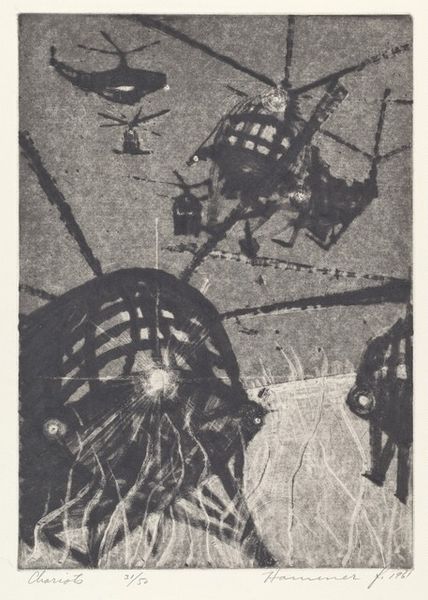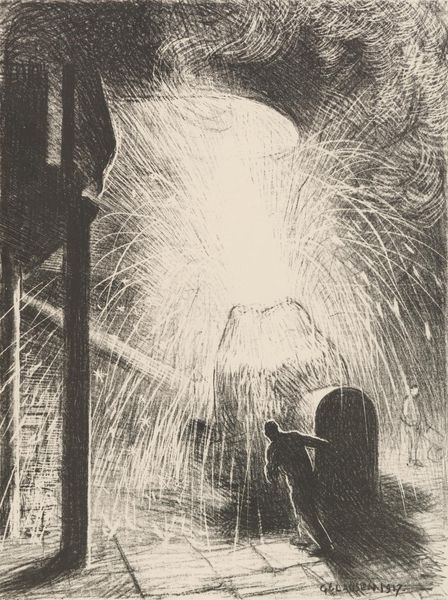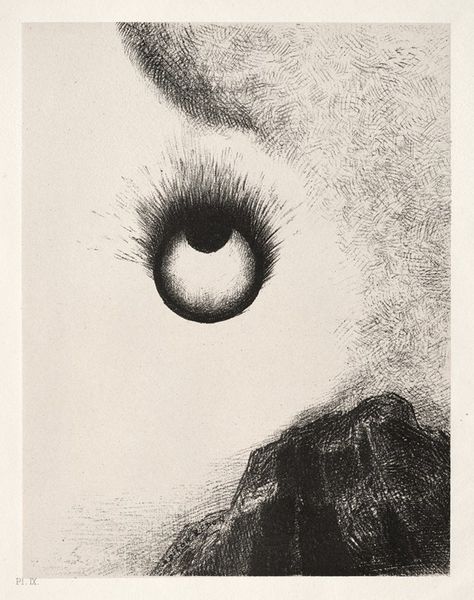
lithograph, print
#
lithograph
# print
#
landscape
#
figuration
#
surrealism
#
line
#
symbolism
#
surrealism
Dimensions: 27.4 x 19.8 cm
Copyright: Public domain
Curator: This is Odilon Redon's 1879 lithograph entitled, "Vision." It presents an ethereal sphere dominating a darkened landscape, crafted through intricate printmaking. What strikes you first about this image? Editor: The stark contrast and unsettling mood immediately grab me. It's as though we're peering into someone's troubled subconscious, and this immense, disembodied eye judges every move. Curator: Considering Redon's shift from painting to lithography in the 1870s, we should think about the expanded potential for mass production. Could prints be considered an intentional artistic choice that opens up the symbolic narrative of ‘Vision’ beyond an exclusive circle of owners, so common in other high art forms? Editor: Absolutely! By democratizing art production, the artist grants an entry point for questioning societal vision, forcing many viewers from distinct classes, genders and backgrounds, to challenge oppressive ideas. Curator: Notice the deliberate texture and tonal range Redon achieves, pushing the lithographic process to create a highly evocative piece. It shows how Redon tested, refined, and subverted his techniques. I suggest his aim wasn’t to produce identical reproductions, but rather exploring unique impressions of the subject matter. Editor: True, that interplay between light and shadow feels very loaded. The setting and figures on the chessboard-like platform contribute a sense of societal and political game play where fates are predetermined and observed. We see in a way a literal visualization of Bentham’s panopticon where we, like the prisoners, are placed under permanent watch. Curator: It is the interplay of these formal artistic considerations with Redon’s intentional destabilization of symbolic value that brings us to the image’s long standing presence in visual culture. It reflects on the tensions and ambivalence found within modernity’s own “vision” for the future, captured materially through a distinctly modern technique. Editor: It also powerfully anticipates contemporary anxieties surrounding surveillance, societal control, and how those at the margins can seek and resist being objectified. Redon gives artistic agency to subjects finding themselves literally underneath systems that demand their absolute conformity. The "Vision" still has relevance today!
Comments
No comments
Be the first to comment and join the conversation on the ultimate creative platform.

